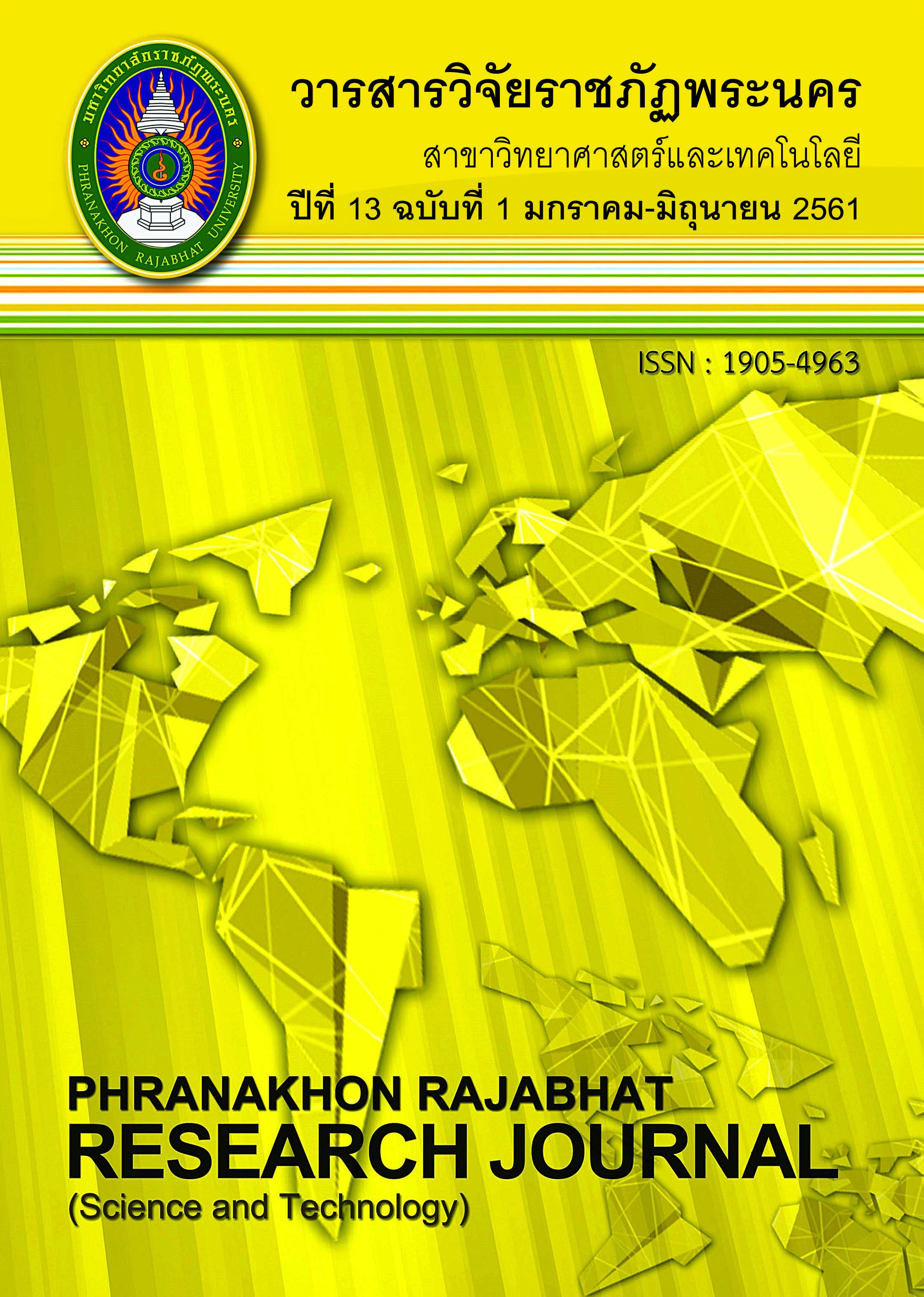EFFECT OF NITROGEN FLOW RATE ON STRUCTURE OF TiCrN THIN FILMS PREPARED FROM MOSAIC TARGET BY REACTIVE DC UNBALANCED MAGNETRON SPUTTERING
คำสำคัญ:
Reactive sputtering, Mosaic target, Nitrogen flow rate, TiCrN, Thin filmsบทคัดย่อ
Titanium chromium nitride (TiCrN) thin films were deposited by reactive DC magnetron sputtering method from mosaic target. The effect of nitrogen gas flow rate on the structure of the TiCrN thin films in the range of 4 – 10 sccm were investigated. The crystal structure, microstructure, thickness, roughness and chemical composition were characterized by glancing angle X-ray diffraction (GAXRD), field emission scanning electron microscopy (FE-SEM), atomic force microscopy (AFM) and energy dispersive X-ray spectroscopy (EDS) echnique, respectively. The results showed that, all the as-deposited films were formed as a (Ti,Cr) N solid solution. The as-deposited films exhibited a nanostructure with a crystal size less than 70 nm. The crystal size of all plane were in the range of 41.4 – 69.6 nm. The lattice constants were in the range of 4.169 Å to 4.179 Å. The thickness decrease from 336 nm to 382 nm with increasing the nitrogen gas flow rate. The chemical composition, Ti Cr and N contents, in the as-deposited films were varied with the nitrogen gas flow rate. The as-deposited films showed compact columnar and dense morphology as a result of increasing the nitrogen gas flow rate.
เอกสารอ้างอิง
John Wiley & Sons.
Golosoc, D.A., Melnikov, S.N. & Dostanko, A.P. (2012). Calculation of the elemental composition of thin films deposited by magnetron sputtering of mosaic targets. Surface Engineering and Applied Electrochemistry. 48(1), 52-59.
Lee, K.H., Park, C.H., Yoon, Y.S. & Lee, J.J. (2001). Structure and properties of (Ti1-xCrx) N coatings produced by the ion-plating method. Thin Solid Films. 385, 167-173.
Paksunchai, C., Denchitcharoen, S., Chaiyakun, S. & Limsuwan, P. (2012). Effect of sputtering current on structure and morphology of (Ti1-xCrx) N thin films deposited by reactive unbalanced magnetron co-sputtering. Procedia Engineering. 32, 875-881.
Shum, P.W., Li, K.Y. & Shen, Y.G. (2004). Improvement of high-speed turning performance of Ti–Al–N coatings by using a pretreatment of high-energy ion implantation. Surface and Coatings Technology. 198, 414-419.
Wang, W.L., Zhang, R.Q., Liao, K.J., Sun, Y.W. & Wang, B.B. (2000). Nucleation and growth of diamond films on aluminum nitride by hot filament chemical vapor deposition. Diamond and Related Materials. 9, 1660-1663.
Witit-anun, N. & Teekhaboot, A. (2016). Effect of Ti sputtering current on structure of TiCrN thin films prepared by reactive DC magnetron co-sputtering. Key Engineering Materials. 675-676,
181-184.
Witit-anun, N. & Buranawong, A. (2017). Effect of deposition time on structure of TiAlN thin films deposited by reactive DC magnetron co-sputtering. Applied Mechanics and Materials. 866, 318-321.
ดาวน์โหลด
เผยแพร่แล้ว
ฉบับ
ประเภทบทความ
สัญญาอนุญาต
โปรดกรอกเอกสารและลงนาม "หนังสือรับรองให้ตีพิมพ์บทความในวารสารวิจัยมหาวิทยาลัยราชภัฏพระนคร สาขาวิทยาศาสตร์และเทคโนโลยี" ก่อนการตีพิมพ์




